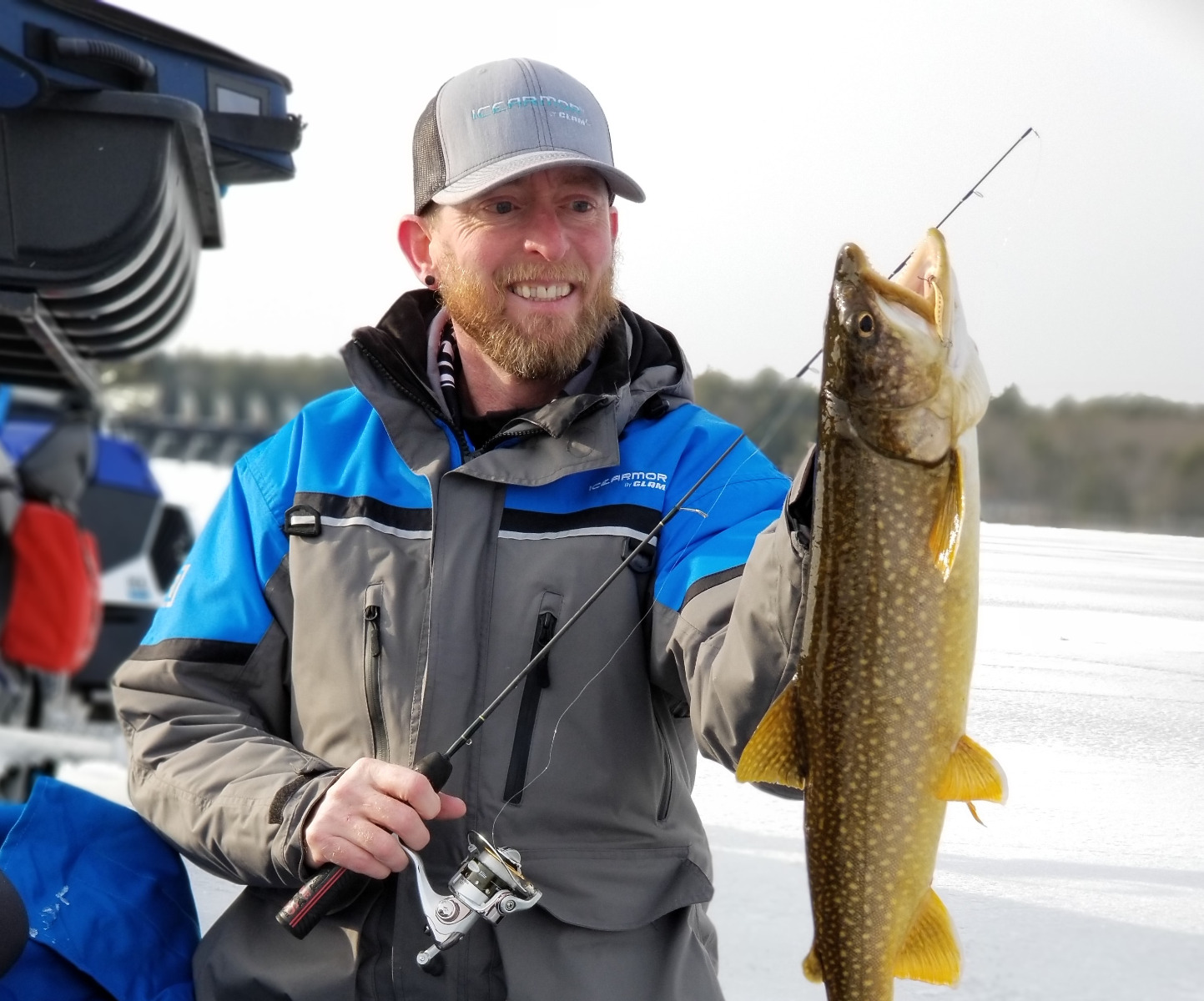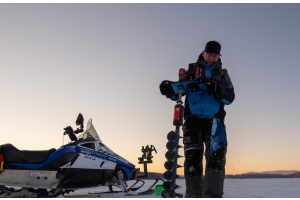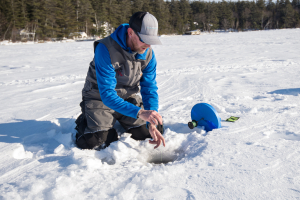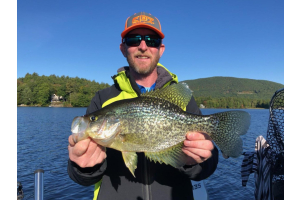
It’s common for lake trout anglers to set up camp in their favorite spot and sit there all day. In New Hampshire anglers regularly chum and wait for the fish to come to them (chumming and using bait are legal in New Hampshire). Most anglers feel like they are having good success because they see fish on their Vexilar or camera all day, even if they don’t get bites, but are they really having good success? Isn’t the idea to catch more fish rather than to see more fish?
Lake trout have a daily range that rarely covers an entire body of water. They will often spend the day in one area. It’s common to not mark any fish on a particular hump, only to catch fish there as little as an hour later. One mistake anglers make is sitting in the same place, fishing in the same hole all day, because they continue to mark fish. The trouble is most of those fish have already decided not to bite. Moving around and fishing other areas gives the fish a break. You’ll often find that when dropping your jig back down a particular hole after leaving it for a while will trigger fish to strike.

If you target fish that are actively feeding you are going to catch more fish. Sometimes, in order to target feeding fish all day, you have to give up on the fish you have been working on. Leaving fish to find fish can often be difficult, but it’s worth it when the fish you are trying to catch don’t want what you have. Fish an area for about an hour. If there are fish around, give them a chance to bite. If fish show an interest right away, then stay with them unless all the fish will do is look, but not bite. The goal is to fish for the biters, not the lookers.
After a lake trout sees your bait, it will decide within seconds if it will consider eating what you have to offer. If the fish sticks around it will be tough to fool. When you see a fish moving on your flx-28, manipulate your jig to coax it to bite, knowing all along that one mistake (anything the fish doesn't like at that moment) will cause the fish to swim away. Sure, some fish can be agitated into striking, but once a fish decides it isn’t interested in what you offer, the game is usually over. All you are doing at that point is educating fish.
It’s a good idea to have a plan when you head out. Know where you will start and where you will go next if that place doesn’t pan out. A quick look at any lake map will help you identify key areas to search for feeding lake trout. Think of it like deer hunting. A little research and scouting will go a long way.
Mobility is a term most often used when discussing pan fishing. However, it very much applies when lake trout fishing. The difference with mobility in regards to lake trout is larger moves. Lake trout will cruise entire coves or bays when feeding and it is often necessary to make larger moves to different areas of a lake in order to get away from fish that have been seeing your bait all morning. Making somewhat large moves to fresh fish will almost always produce results, but always go back and fish old holes, because a second look at your bait may change a stubborn lake trout’s mind.










